Abstract
Heterogeneity, ranging from measurement error to variation among individuals or regions, influences all levels of data collected for risk assessment. In its role as a nemesis, heterogeneity can reduce the precision of estimates, change the shape of a population model, or reduce the generalizability of study results. In many contexts, however, heterogeneity is the primary object of inference. Indeed, some degree of heterogeneity in excess of a baseline amount associated with a statistical model is necessary in order to identify important determinants of response. This report outlines the causes and influences of heterogeneity, develops statistical methods used to estimate and account for it, discusses interpretations of heterogeneity, and shows how it should influence study design. Examples from dose-response modeling, identification of sensitive individuals, assessment of small area variations and meta analysis provide applied contexts.
Full text
PDF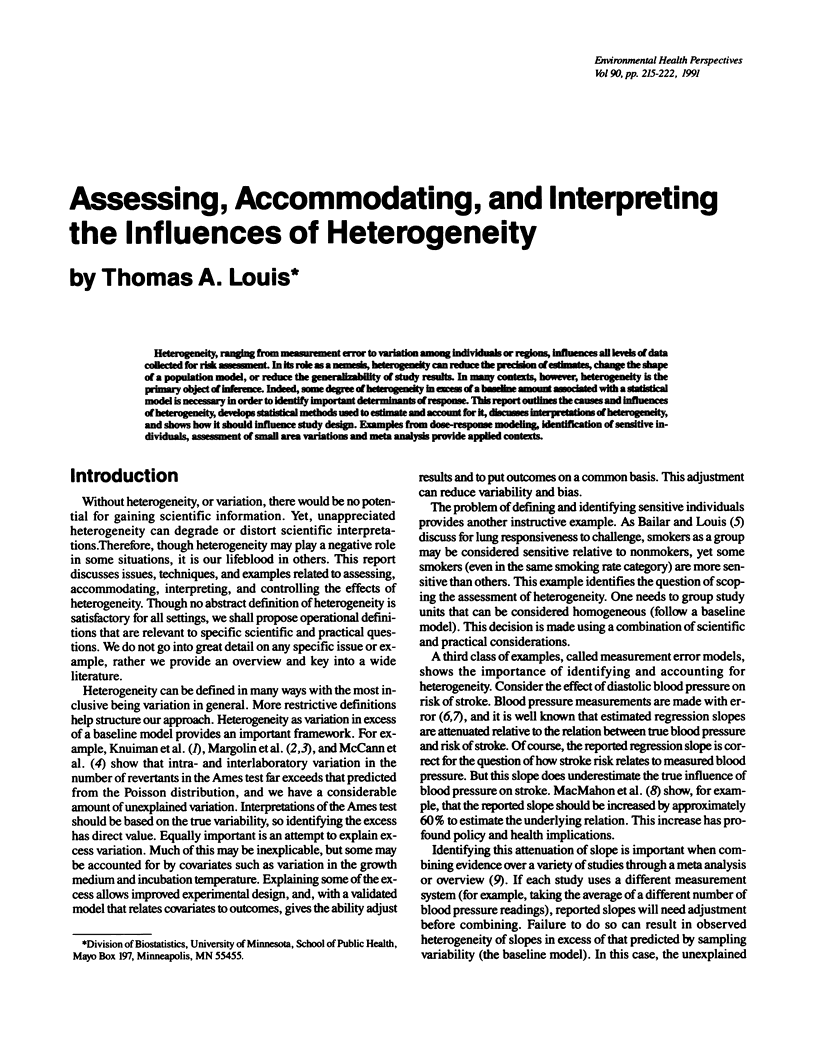

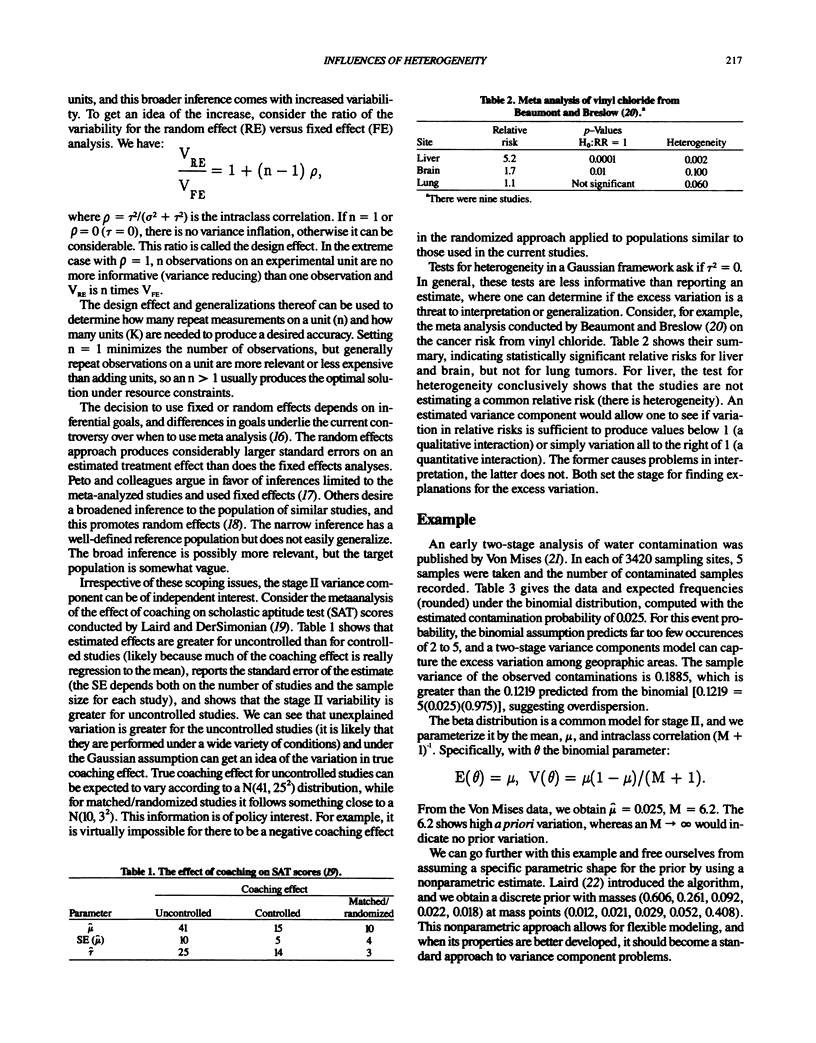
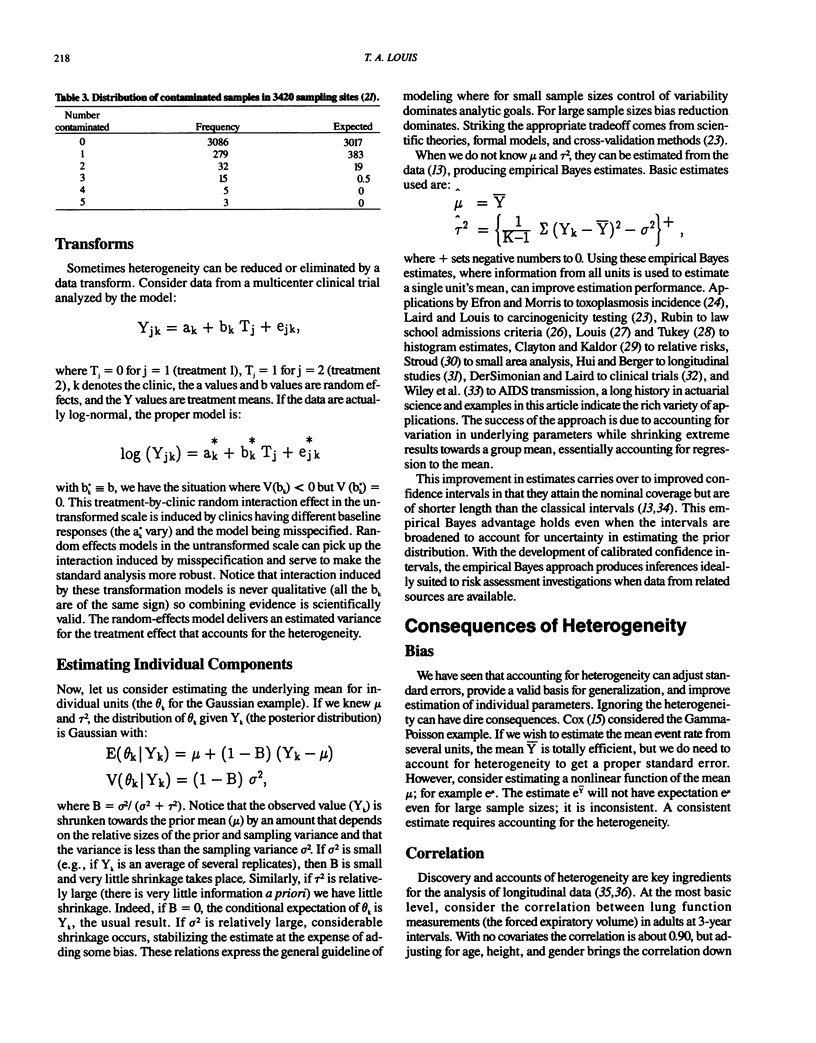
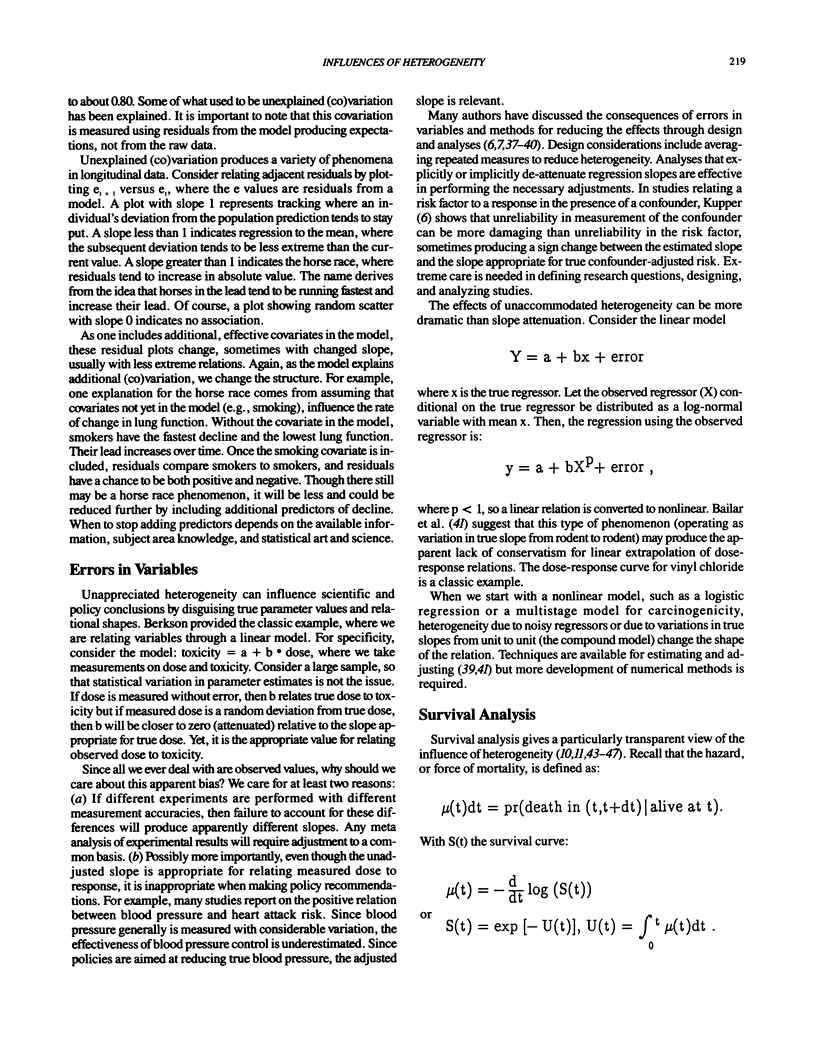
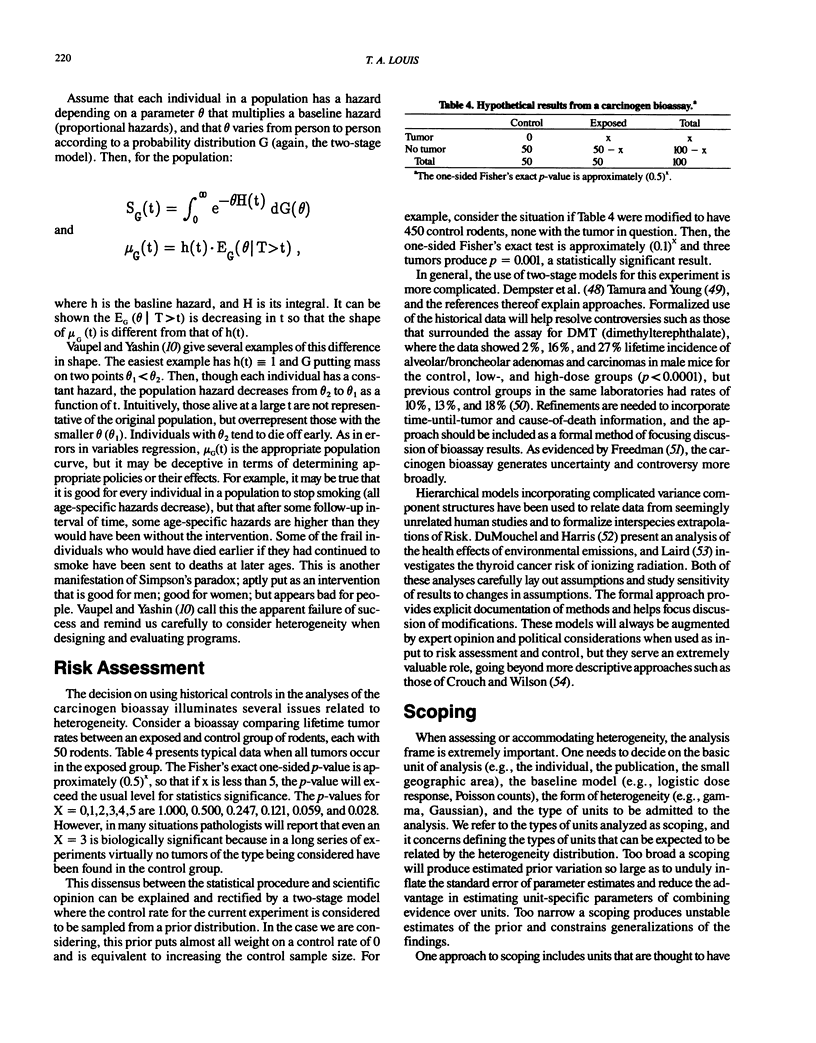
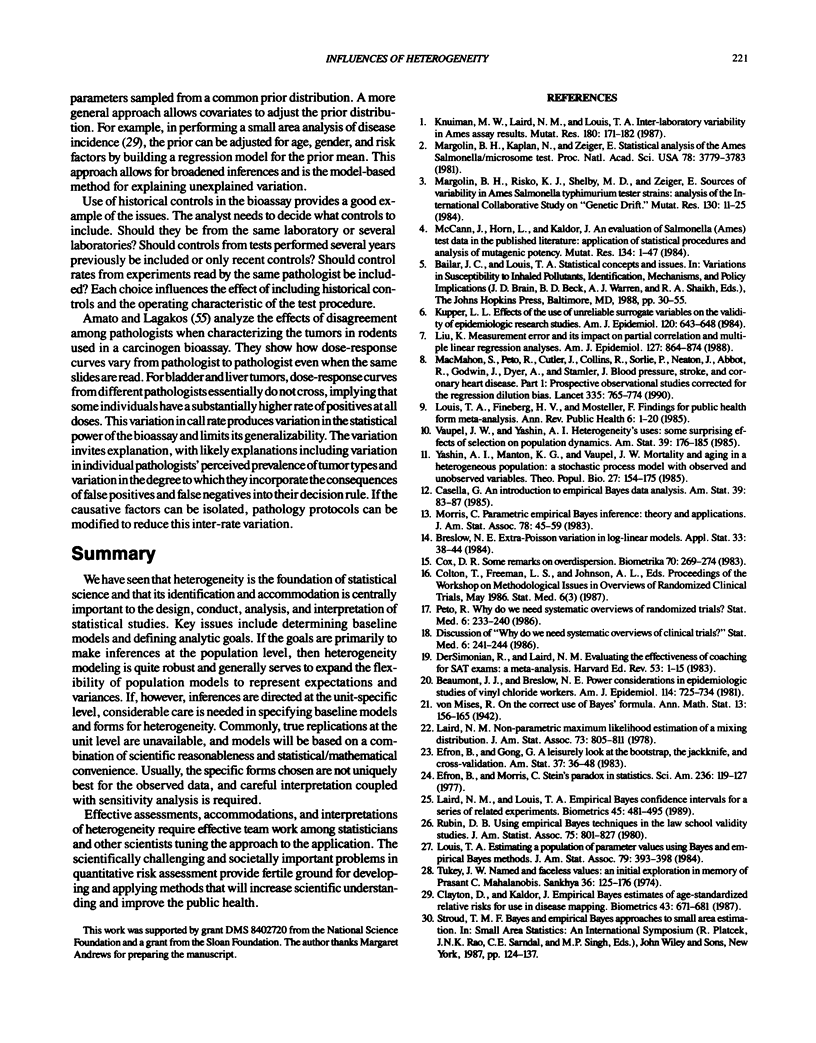

Selected References
These references are in PubMed. This may not be the complete list of references from this article.
- Amato D. A., Lagakos S. W. Analysis of agreement among findings of pathologists in ED01 experiment. J Natl Cancer Inst. 1988 Aug 17;80(12):919–925. doi: 10.1093/jnci/80.12.919. [DOI] [PubMed] [Google Scholar]
- Bailar J. C., 3rd, Crouch E. A., Shaikh R., Spiegelman D. One-hit models of carcinogenesis: conservative or not? Risk Anal. 1988 Dec;8(4):485–497. doi: 10.1111/j.1539-6924.1988.tb01189.x. [DOI] [PubMed] [Google Scholar]
- Beaumont J. J., Breslow N. E. Power considerations in epidemiologic studies of vinyl chloride workers. Am J Epidemiol. 1981 Nov;114(5):725–734. doi: 10.1093/oxfordjournals.aje.a113244. [DOI] [PubMed] [Google Scholar]
- Clayton D., Kaldor J. Empirical Bayes estimates of age-standardized relative risks for use in disease mapping. Biometrics. 1987 Sep;43(3):671–681. [PubMed] [Google Scholar]
- Crouch E., Wilson R. Interspecies comparison of carcionogenic potency. J Toxicol Environ Health. 1979 Nov;5(6):1095–1118. doi: 10.1080/15287397909529817. [DOI] [PubMed] [Google Scholar]
- DerSimonian R., Laird N. Meta-analysis in clinical trials. Control Clin Trials. 1986 Sep;7(3):177–188. doi: 10.1016/0197-2456(86)90046-2. [DOI] [PubMed] [Google Scholar]
- Knuiman M. W., Laird N. M., Louis T. A. Inter-laboratory variability in Ames assay results. Mutat Res. 1987 Oct;180(2):171–182. doi: 10.1016/0027-5107(87)90212-0. [DOI] [PubMed] [Google Scholar]
- Kupper L. L. Effects of the use of unreliable surrogate variables on the validity of epidemiologic research studies. Am J Epidemiol. 1984 Oct;120(4):643–648. doi: 10.1093/oxfordjournals.aje.a113926. [DOI] [PubMed] [Google Scholar]
- Laird N. M. Thyroid cancer risk from exposure to ionizing radiation: a case study in the comparative potency model. Risk Anal. 1987 Sep;7(3):299–309. doi: 10.1111/j.1539-6924.1987.tb00465.x. [DOI] [PubMed] [Google Scholar]
- Liu K. Measurement error and its impact on partial correlation and multiple linear regression analyses. Am J Epidemiol. 1988 Apr;127(4):864–874. doi: 10.1093/oxfordjournals.aje.a114870. [DOI] [PubMed] [Google Scholar]
- Louis T. A., Fineberg H. V., Mosteller F. Findings for public health from meta-analyses. Annu Rev Public Health. 1985;6:1–20. doi: 10.1146/annurev.pu.06.050185.000245. [DOI] [PubMed] [Google Scholar]
- Louis T. A. General methods for analysing repeated measures. Stat Med. 1988 Jan-Feb;7(1-2):29–45. doi: 10.1002/sim.4780070108. [DOI] [PubMed] [Google Scholar]
- MacMahon S., Peto R., Cutler J., Collins R., Sorlie P., Neaton J., Abbott R., Godwin J., Dyer A., Stamler J. Blood pressure, stroke, and coronary heart disease. Part 1, Prolonged differences in blood pressure: prospective observational studies corrected for the regression dilution bias. Lancet. 1990 Mar 31;335(8692):765–774. doi: 10.1016/0140-6736(90)90878-9. [DOI] [PubMed] [Google Scholar]
- Manton K. G., Stallard E., Vaupel J. W. Alternative models for the heterogeneity of mortality risks among the aged. J Am Stat Assoc. 1986 Sep;81(395):635–644. doi: 10.1080/01621459.1986.10478316. [DOI] [PubMed] [Google Scholar]
- Margolin B. H., Kaplan N., Zeiger E. Statistical analysis of the Ames Salmonella/microsome test. Proc Natl Acad Sci U S A. 1981 Jun;78(6):3779–3783. doi: 10.1073/pnas.78.6.3779. [DOI] [PMC free article] [PubMed] [Google Scholar]
- Margolin B. H., Risko K. J., Shelby M. D., Zeiger E. Sources of variability in Ames Salmonella typhimurium tester strains: analysis of the International Collaborative Study on 'genetic drift'. Mutat Res. 1984 Feb;130(1):11–25. doi: 10.1016/0165-1161(84)90003-7. [DOI] [PubMed] [Google Scholar]
- McCann J., Horn L., Kaldor J. An evaluation of Salmonella (Ames) test data in the published literature: application of statistical procedures and analysis of mutagenic potency. Mutat Res. 1984 Jul;134(1):1–47. doi: 10.1016/0165-1110(84)90013-7. [DOI] [PubMed] [Google Scholar]
- Peto R. Why do we need systematic overviews of randomized trials? Stat Med. 1987 Apr-May;6(3):233–244. doi: 10.1002/sim.4780060306. [DOI] [PubMed] [Google Scholar]
- Schumacher M., Olschewski M., Schmoor C. The impact of heterogeneity on the comparison of survival times. Stat Med. 1987 Oct-Nov;6(7):773–784. doi: 10.1002/sim.4780060708. [DOI] [PubMed] [Google Scholar]
- Stiratelli R., Laird N., Ware J. H. Random-effects models for serial observations with binary response. Biometrics. 1984 Dec;40(4):961–971. [PubMed] [Google Scholar]
- Tamura R. N., Young S. S. The incorporation of historical control information in tests of proportions: simulation study of Tarone's procedure. Biometrics. 1986 Jun;42(2):343–349. [PubMed] [Google Scholar]
- Vaupel J. W., Yashin A. I. Heterogeneity's ruses: some surprising effects of selection on population dynamics. Am Stat. 1985 Aug;39(3):176–185. [PubMed] [Google Scholar]
- Wiley J. A., Herschkorn S. J., Padian N. S. Heterogeneity in the probability of HIV transmission per sexual contact: the case of male-to-female transmission in penile-vaginal intercourse. Stat Med. 1989 Jan;8(1):93–102. doi: 10.1002/sim.4780080110. [DOI] [PubMed] [Google Scholar]
- Yashin A. I., Manton K. G., Vaupel J. W. Mortality and aging in a heterogeneous population: a stochastic process model with observed and unobserved variables. Theor Popul Biol. 1985 Apr;27(2):154–175. doi: 10.1016/0040-5809(85)90008-5. [DOI] [PubMed] [Google Scholar]


